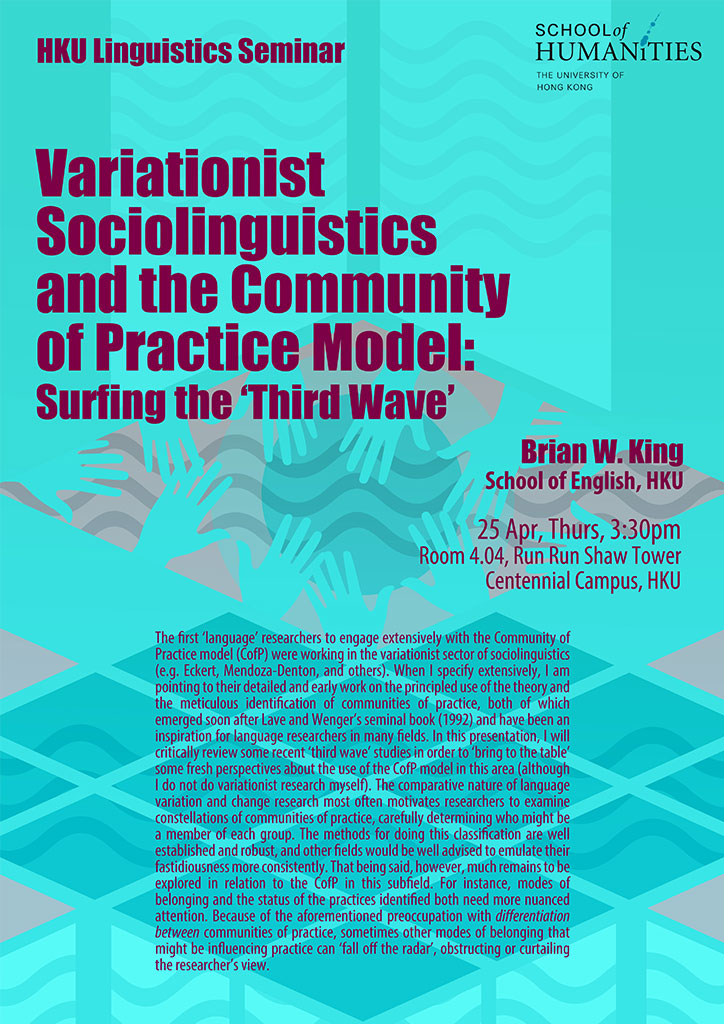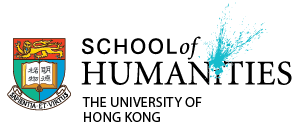
Department of Linguistics
Variationist Sociolinguistics and the Community of Practice model: Surfing the ‘third wave’
Speaker: Brian W. King, School of English, HKU
Time: 3.30pm, 25th April 2019
Venue: Room 4.04, Run Run Shaw Tower, Centennial Campus, HKU
Abstract:
The first ‘language’ researchers to engage extensively with the Community of Practice model (CofP) were working in the variationist sector of sociolinguistics (e.g. Eckert, Mendoza-Denton, and others). When I specify extensively, I am pointing to their detailed and early work on the principled use of the theory and the meticulous identification of communities of practice, both of which emerged soon after Lave and Wenger’s seminal book (1992) and have been an inspiration for language researchers in many fields. In this presentation, I will critically review some recent ‘third wave’ studies in order to ‘bring to the table’ some fresh perspectives about the use of the CofP model in this area (although I do not do variationist research myself). The comparative nature of language variation and change research most often motivates researchers to examine constellations of communities of practice, carefully determining who might be a member of each group. The methods for doing this classification are well established and robust, and other fields would be well advised to emulate their fastidiousness more consistently. That being said, however, much remains to be explored in relation to the CofP in this subfield. For instance, modes of belonging and the status of the practices identified both need more nuanced attention. Because of the aforementioned preoccupation with differentiation between communities of practice, sometimes other modes of belonging that might be influencing practice can ‘fall off the radar’, obstructing or curtailing the researcher’s view.
